Abstract
We tested the effects of multiple exemplar instruction (MEI) on the emergence of untaught mands or tacts of adjective-object pairs in a multiple-probe design across four students with autism/developmental disabilities. None of the students emitted either mands or tacts for three sets of three adjective-object pairs (word sets counterbalanced across students and conditions) in pre-experimental probe trials. In the baseline phase, either mands or tacts were taught for the first adjective-object pairs to each student who then received probe trials for the untaught verbal operants. None of the students emitted the verbal operant that was not directly taught. In the MEI condition, a second set of adjective-object pairs was taught under alternating mand and tact conditions until both operants were mastered. Following mastery of the second set in the MEI condition, students were again probed for the untaught mands or tacts for the adjective-object pairs that were not in their repertoires when a single verbal operant was taught in baseline (the first set). All students emitted the untaught mands or tacts for the first set. Finally, a third set of adjective-object pairs was taught as tacts or mands and the untaught mands or tacts emerged. The data are discussed in terms of generative verbal behavior, abstraction of establishing operation control, and multiple exemplar instruction.
Full text
PDF

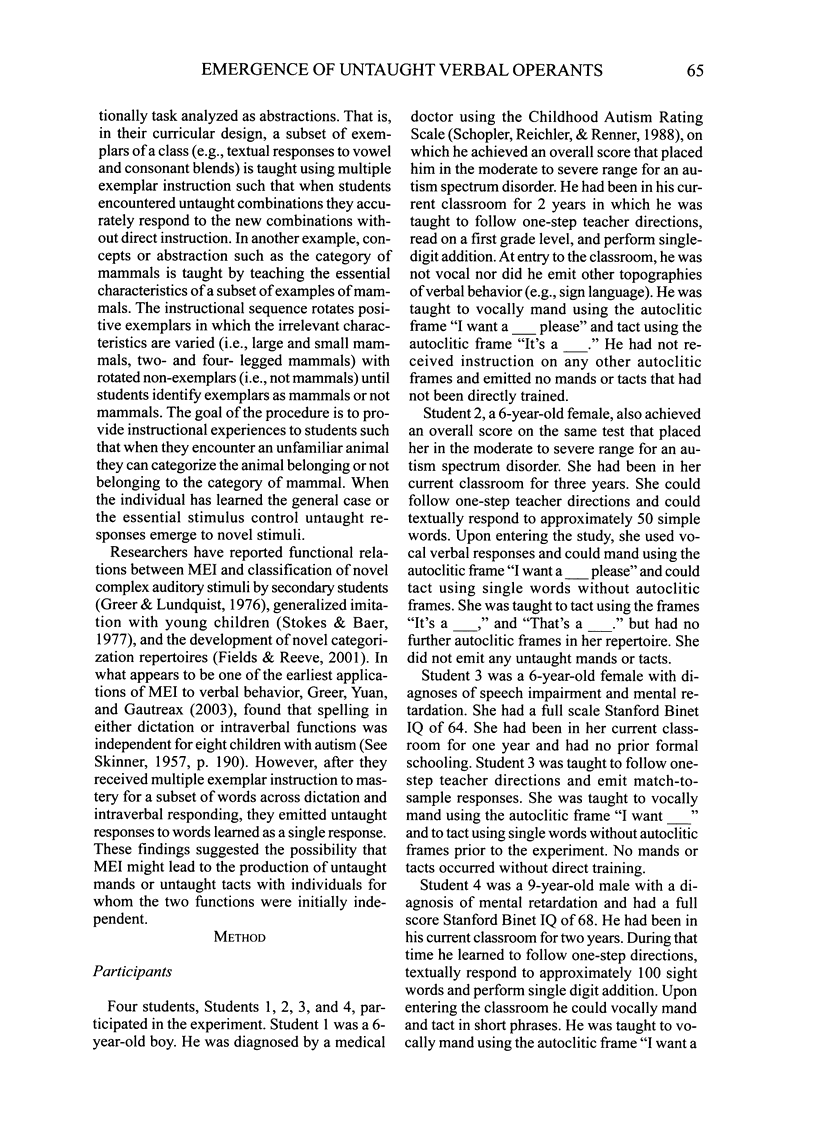
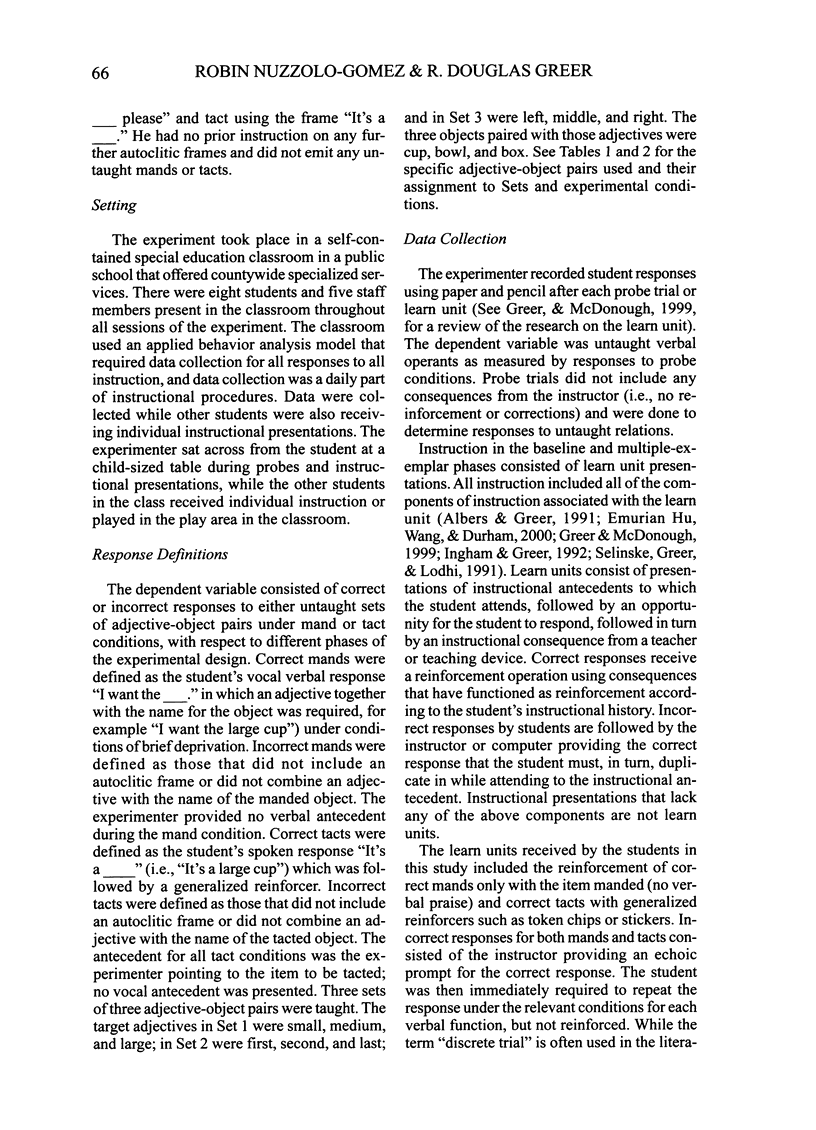

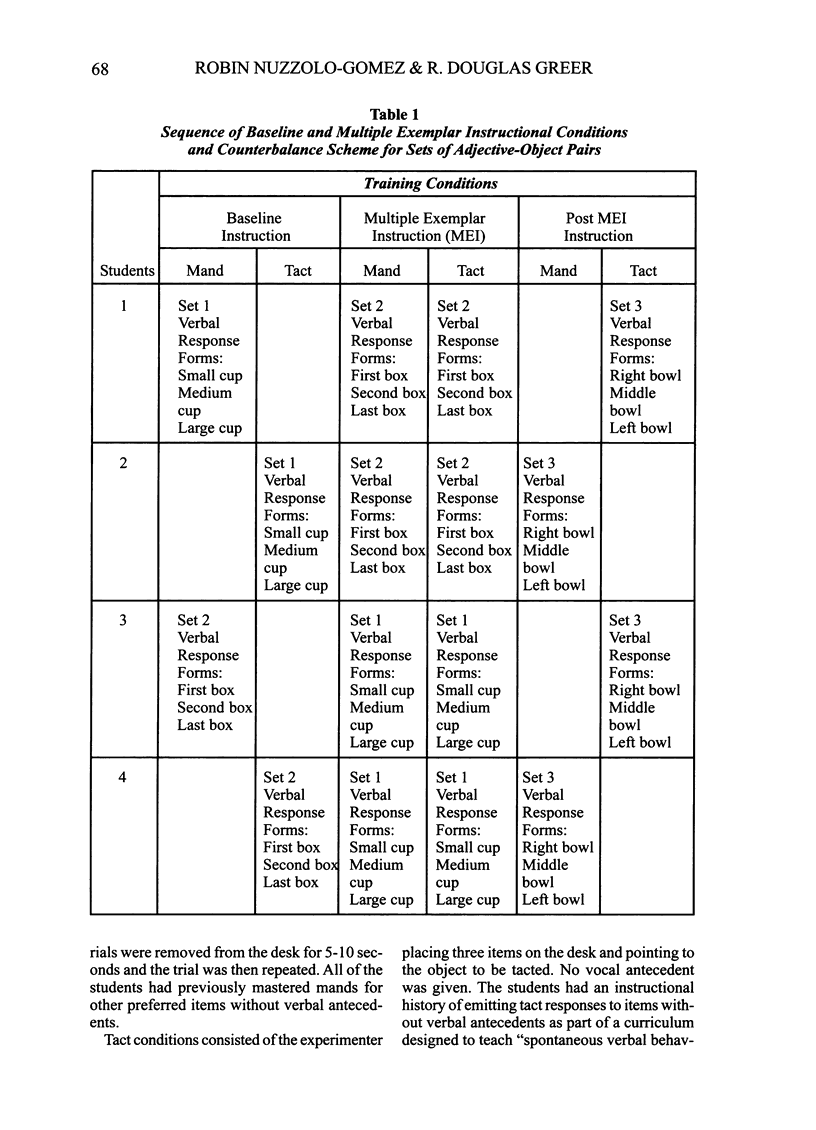
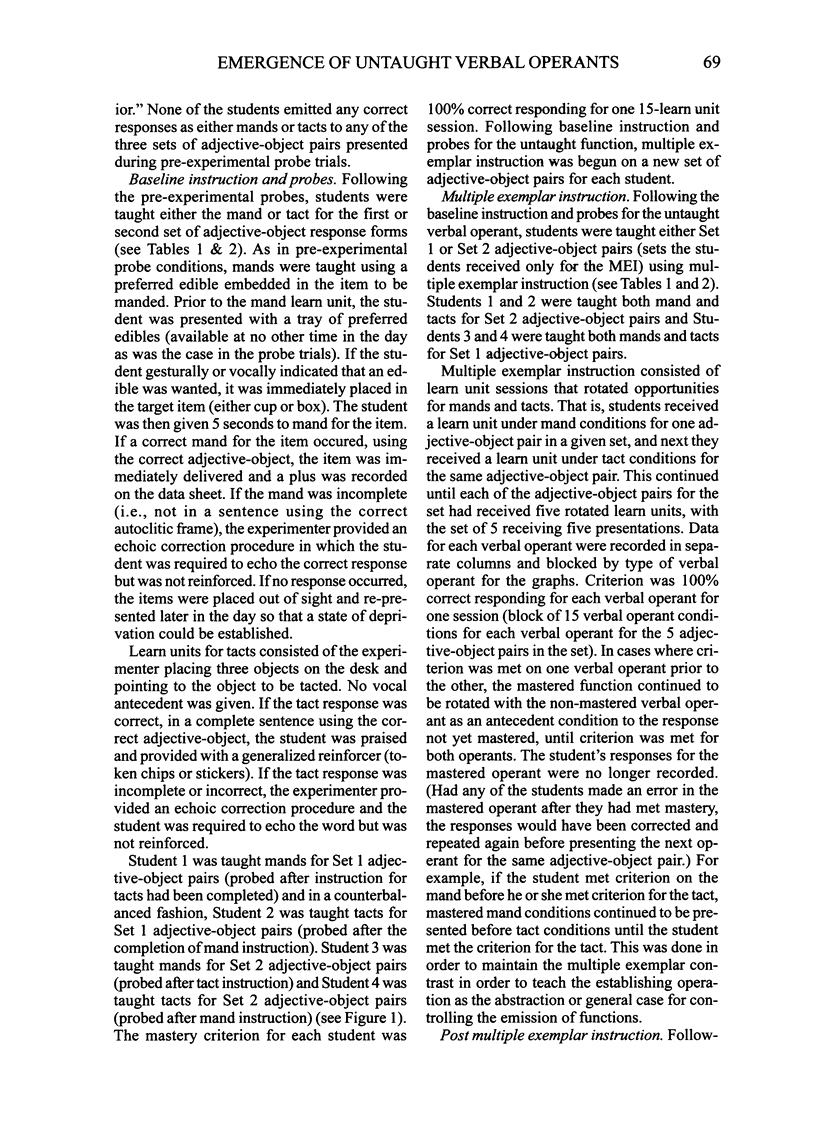

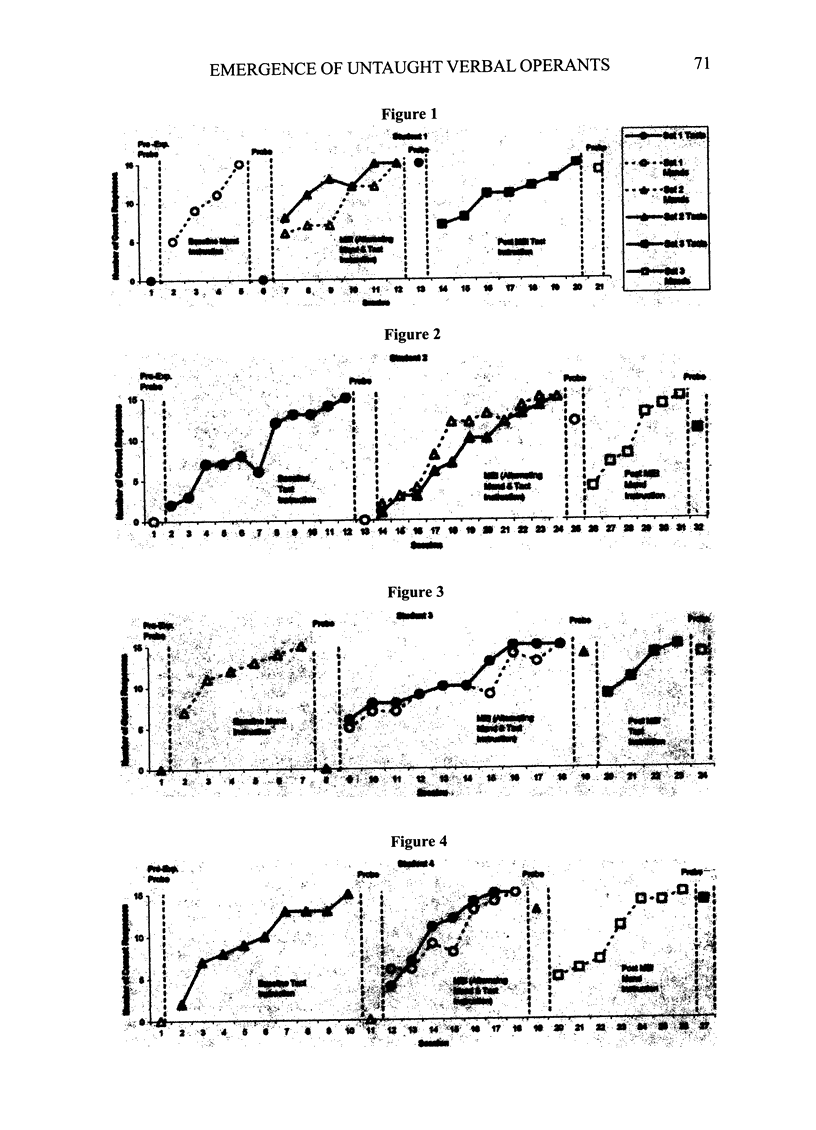
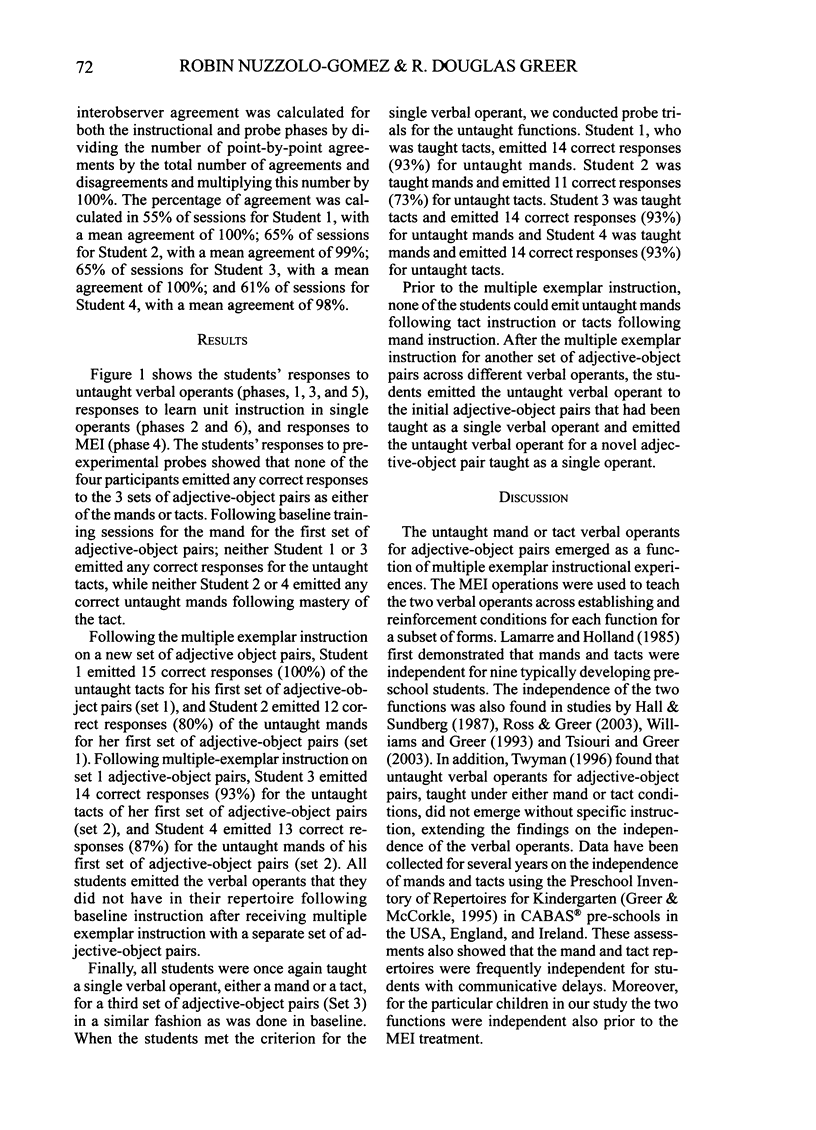


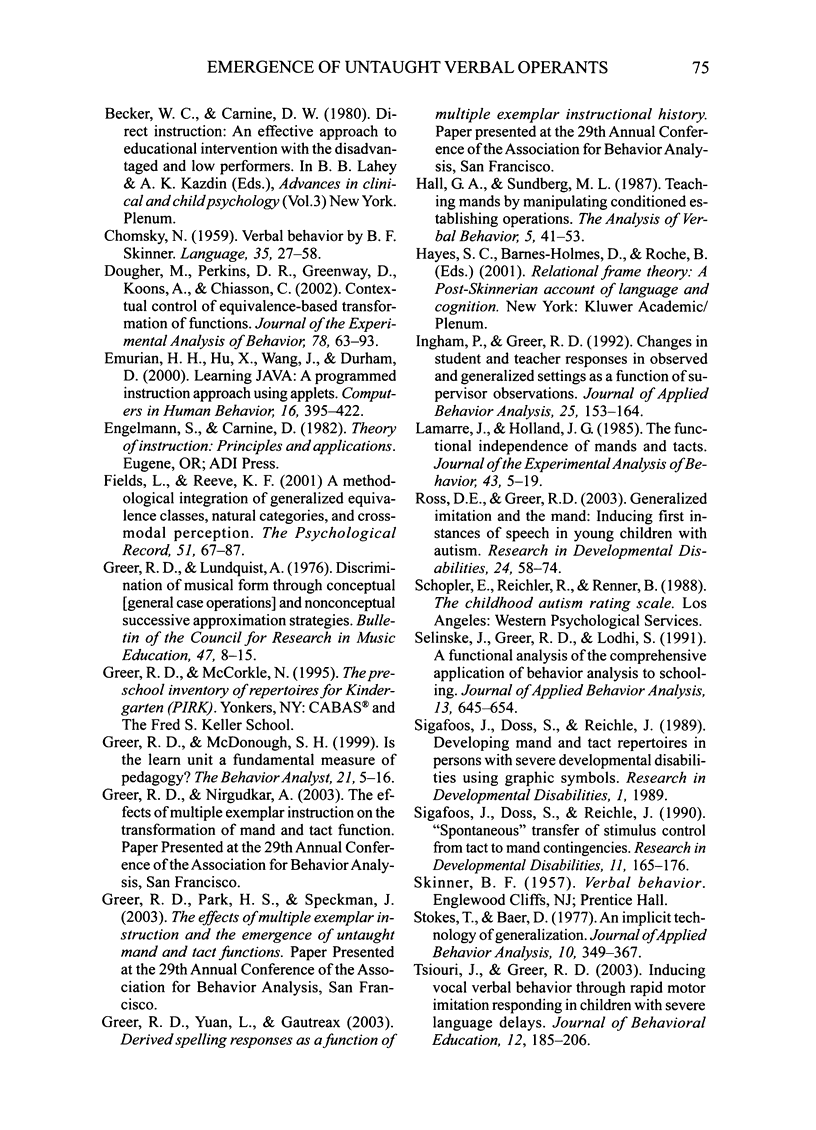

Selected References
These references are in PubMed. This may not be the complete list of references from this article.
- Dougher Michael, Perkins David R., Greenway David, Koons Ashton, Chiasson Carmenne. Contextual control of equivalence-based transformation of functions. J Exp Anal Behav. 2002 Jul;78(1):63–93. doi: 10.1901/jeab.2002.78-63. [DOI] [PMC free article] [PubMed] [Google Scholar]
- Greer R. D., McDonough S. H. Is the learn unit a fundamental measure of pedagogy? Behav Anal. 1999 Spring;22(1):5–16. doi: 10.1007/BF03391973. [DOI] [PMC free article] [PubMed] [Google Scholar]
- Ingham P., Greer R. D. Changes in student and teacher responses in observed and generalized settings as a function of supervisor observations. J Appl Behav Anal. 1992 Spring;25(1):153–164. doi: 10.1901/jaba.1992.25-153. [DOI] [PMC free article] [PubMed] [Google Scholar]
- Lamarre J., Holland J. G. The functional independence of mands and tacts. J Exp Anal Behav. 1985 Jan;43(1):5–19. doi: 10.1901/jeab.1985.43-5. [DOI] [PMC free article] [PubMed] [Google Scholar]
- Ross Denise E., Greer R. Douglas. Generalized imitation and the mand: inducing first instances of speech in young children with autism. Res Dev Disabil. 2003 Jan-Feb;24(1):58–74. doi: 10.1016/s0891-4222(02)00167-1. [DOI] [PubMed] [Google Scholar]
- Sigafoos J., Reichle J., Doss S., Hall K., Pettitt L. "Spontaneous" transfer of stimulus control from tact to mand contingencies. Res Dev Disabil. 1990;11(2):165–176. doi: 10.1016/0891-4222(90)90033-5. [DOI] [PubMed] [Google Scholar]


